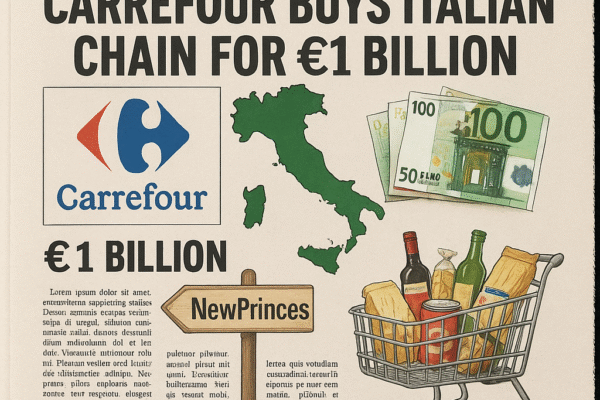As blockchain technology matures and digital assets gain institutional acceptance, cryptocurrency influencers and seasoned acquirers are pioneering new pathways to public markets through special purpose acquisition companies (SPACs). Anthony Pompliano’s $200 million ProCap Acquisition Corp and Trump Media-linked Renatus Tactical Acquisition Corp I’s $179 million offering demonstrate how personality-driven investment vehicles are capitalizing on crypto’s second-wave adoption. Concurrently, established players like Digital Asset Acquisition Corp deploy sector-specific expertise to consolidate emerging Web3 infrastructure providers. This convergence of influencer clout, political networks, and institutional capital reveals fundamental shifts in how blockchain enterprises access growth financing while navigating an evolving regulatory landscape.
The Influencer SPAC Blueprint: Anthony Pompliano’s ProCap Acquisition Corp
Building a Media-First Acquisition Platform
Anthony Pompliano’s ProCap Acquisition Corp represents a novel fusion of financial engineering and social media leverage. With 1.7 million X followers and 260,000 daily newsletter subscribers, Pompliano has constructed a vertically integrated content ecosystem that directly feeds deal flow[1][9]. The SPAC’s SEC filing explicitly cites his “ability to generate proprietary opportunities through media presence” as a competitive advantage, essentially formalizing influencer marketing as a due diligence filter[17]. This approach contrasts sharply with traditional SPAC models reliant on investment banking relationships, instead leveraging real-time community sentiment analysis through platforms like Pomp’s Crypto Podcast.
Structural Innovations and Founder Incentives
ProCap’s capital structure reveals strategic adaptations to crypto market dynamics. While maintaining the standard $10 per unit pricing (comprising one Class A share and 1/4 warrant), the sponsor’s 20% promote stake includes performance-based vesting tied to post-merger price thresholds[9]. This aligns with lessons from failed 2021-era SPACs where founders liquidated immediately after de-SPACing. The company’s $11.50 warrant exercise price sits 15% above IPO levels versus the typical 11.5% premium, potentially reducing dilution pressure if crypto valuations stabilize[1].
Target Selection in a Volatile Ecosystem
Though ProCap hasn’t identified specific targets, its focus on fintech and digital asset infrastructure suggests interest in bridging TradFi-DeFi interoperability gaps. Likely candidates include non-custodial wallet providers, institutional staking platforms, or regulated derivatives exchanges – sectors where Pompliano’s Morgan Creek Digital Assets fund previously invested[9]. The SPAC’s $200 million war chest could facilitate roll-up strategies in fragmented markets like NFT royalty platforms or blockchain analytics tools, areas currently dominated by venture-backed startups rather than public entities.
Institutional Counterweights: Renatus Tactical and Digital Asset Acquisition Corp
Political Capital Meets Crypto Infrastructure
Renatus Tactical Acquisition Corp I’s $179 million raise exemplifies how political networks are colonizing blockchain markets. Chaired by Trump Media CEO Devin Nunes and led by Digital World Acquisition Corp veterans, the SPAC explicitly ties its strategy to Trump administration policies supporting “national financial infrastructure modernization through blockchain integration”[10][16]. This positions Renatus to capitalize on federal contracts for blockchain-based voting systems or CBDC alternatives, leveraging relationships with Trump-appointed SEC and FTC regulators[2].
Sector-Specific Consolidation Plays
Digital Asset Acquisition Corp’s parallel $150 million offering targets more conventional Web3 infrastructure plays. Led by Cambium Capital’s Peter Ort, the SPAC emphasizes “digital asset adjacent sectors” including tokenized real estate and computing infrastructure[8]. With management’s background in Concord Acquisition Corp’s successful merger with GCT Semiconductor, this vehicle could pursue horizontal integration in proof-of-stake validation services or modular blockchain protocols – areas requiring significant capex that public markets can provide.
Regulatory Arbitrage Opportunities
Both SPACs benefit from timing regulatory shifts. Renatus’s Cayman Islands incorporation allows pursuit of US targets while mitigating SEC oversight, crucial given Trump Media’s ongoing securities litigation[10]. Digital Asset Acquisition’s focus on real estate tokenization aligns with emerging SEC guidelines for asset-backed digital securities, creating a potential first-mover advantage in REIT tokenization platforms[4].
Market Dynamics: SPACs as Crypto’s Second-Wave Liquidity Engine
Post-ETF Capital Formation
The 2024-2025 SPAC resurgence follows Bitcoin and Ethereum ETF approvals that injected $42 billion into crypto markets, creating demand for equity exposure to underlying infrastructure providers[6][15]. Unlike 2021’s retail-driven SPAC boom, current vehicles attract institutional allocators seeking regulated entry points beyond spot crypto products. ProCap’s partnership with BTIG and Renatus’s use of Cohen & Company Securities reflect this pivot to professional capital[1][8].
Valuation Recalibration Mechanisms
SPACs address crypto’s valuation paradox where private unicorns face downrounds while public comparables trade at premium multiples. By negotiating fixed enterprise values upfront (typically 5-7x revenue for growth-stage targets), acquirers can bypass volatile IPO pricing[4][7]. Digital Asset Acquisition’s focus on “adjacent sectors” specifically targets companies with traditional financial metrics that appeal to generalist investors, unlike pure-play crypto exchanges.
Liquidity Solutions for Venture Backers
With crypto VC exit activity still below 2021 levels, SPACs provide liquidity pathways for early investors in companies like Fireblocks or Chainalysis. The structure allows founders to maintain control via stock-vote differentials while offering VCs structured redemption options – critical given many funds’ impending 7-10 year lifecycles[11].
Regulatory Crosscurrents: Navigating the New SEC Playbook
Enhanced Disclosure Requirements
The SEC’s 2024 SPAC Rule amendments force detailed target company disclosures pre-merger, particularly regarding crypto accounting practices and custody solutions[4][7]. ProCap’s filing already incorporates FASB’s new digital asset fair value measurement standards, while Renatus reserves 8% of proceeds for compliance costs related to national security reviews of blockchain infrastructure[10][17].
Political Risk Calculus
Renatus’s Trump affiliations create unique regulatory exposure. While connections to SEC Chair Hester Peirce could streamline approvals, Democratic state attorneys general might challenge mergers perceived as politically motivated[16]. The SPAC’s contingency planning includes $15 million escrow for potential FCPA violations related to international blockchain deals[2].
Stablecoin Precedents and Implications
Stripe’s $1.1 billion acquisition of stablecoin platform Bridge establishes critical precedents for SPACs targeting payment infrastructure[15]. Deal terms included Bridge’s reserves being 100% cash-collateralized – a structure likely mandated for any SPAC merging with stablecoin issuers. This raises due diligence costs but provides regulatory certainty compared to algorithmic stablecoin models.
Synthesis and Strategic Implications
The 2025 SPAC wave demonstrates crypto’s maturation into a multi-tiered capital markets ecosystem. Influencer-led vehicles like ProCap exploit network effects between retail communities and institutional deal flow, while politically-connected acquirers like Renatus position for policy-driven infrastructure buildouts. Concurrently, sector-specific SPACs provide exit ramps for venture-backed companies needing growth capital beyond private markets.
Success hinges on navigating three fault lines: 1) Balancing influencer promotion with SEC’s anti-hype disclosure rules, 2) Mitigating political backlash against Trump-linked crypto ventures, and 3) Achieving profitability thresholds demanded by post-2024 SPAC investors. Companies that leverage these vehicles for horizontal integration in custody solutions, institutional DeFi, or regulated stablecoins appear best positioned for long-term value creation.
Sources
https://www.thestar.com.my/business/business-news/2025/05/02/crypto-influencer-led-firm-files-for-ipo, https://www.fintechweekly.com/magazine/articles/trump-media-executives-launch-179-million-usd-spac-aimed-at-crypto-and-blockchain-deals, https://www.cfo.com/news/7-spacs-to-play-the-rise-of-bitcoin-crypto-stocks/655865/, https://www2.deloitte.com/content/dam/Deloitte/us/Documents/audit/us-spac-transactions-in-the-digital-asset-ecosystem.pdf, https://cve.mitre.org/cgi-bin/cvekey.cgi, https://99bitcoins.com/news/pr-news/worldcoin-orbs-are-scanning-eyes-in-usa-new-crypto-ai-agent-launches-in-29-days/, https://www2.deloitte.com/us/en/pages/audit/articles/spac-cryptocurrency.html, https://www.renaissancecapital.com/IPO-Center/News/109265/SPAC-Digital-Asset-Acquisition-files-for-a-$150-million-IPO-targeting-crypt, https://coinpedia.org/news/anthony-pompliano-launches-200m-spac-to-take-crypto-influence-public/amp/, https://moneycheck.com/cashing-in-on-crypto-trump-media-execs-launch-new-179m-spac/, https://www.ftitechnology.com/resources/blog/cryptocurrency-and-the-rise-of-spacs-a-match-made-in-investor-heaven, http://coursecatalog.web.cmu.edu/schools-colleges/schoolofcomputerscience/, https://www.coindesk.com/sponsored-content/influencer-achieves-significant-growth-through-inscriptions-on-phemex, https://www.newswire.ca/news-releases/dulcedo-group-acquires-ai-powered-influencer-marketing-startup-node-app-821468153.html, https://cryptoslate.com/stripe-acquires-stablecoin-platform-bridge-for-1-1-billion/, https://coinpedia.org/news/trump-media-execs-launch-spac-to-raise-179m-targeting-crypto-tech/, https://www.bitdegree.org/crypto/news/anthony-pompliano-eyes-nasdaq-debut-with-200-million-spac-deal





